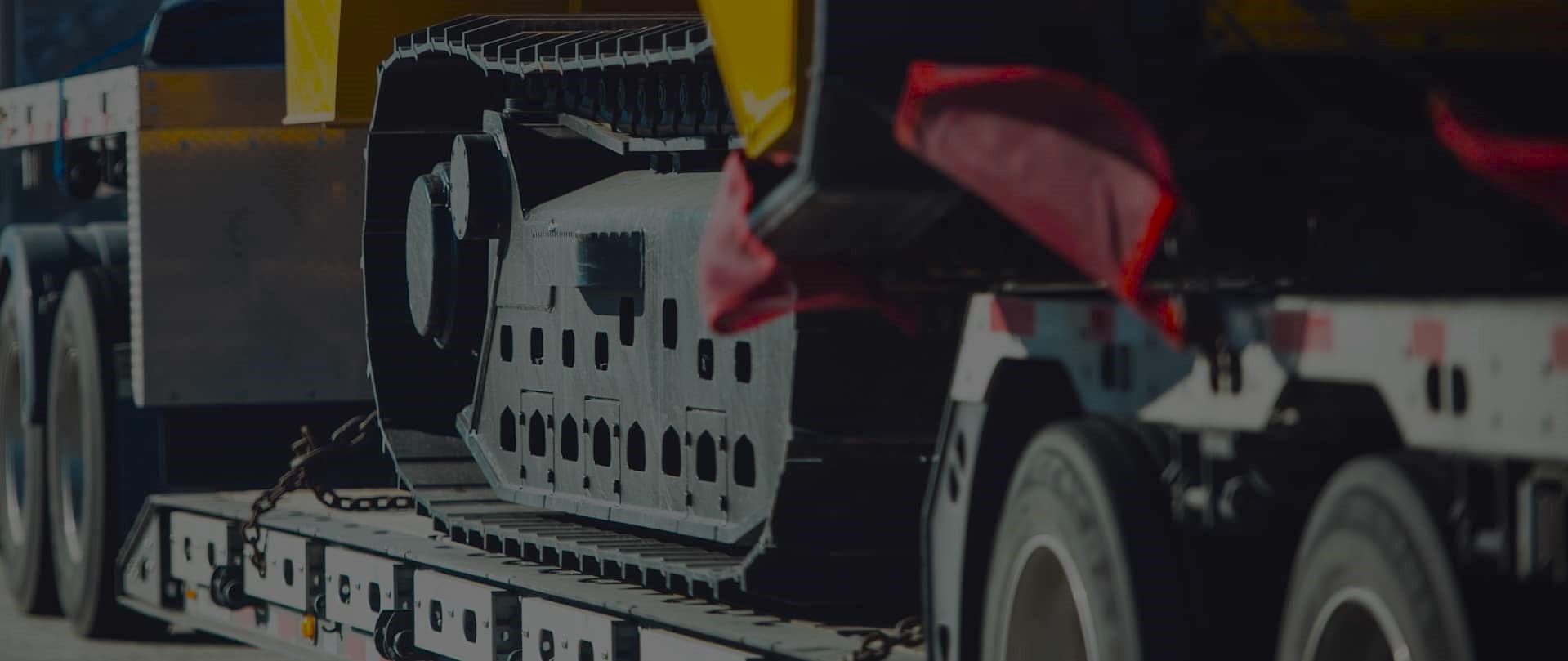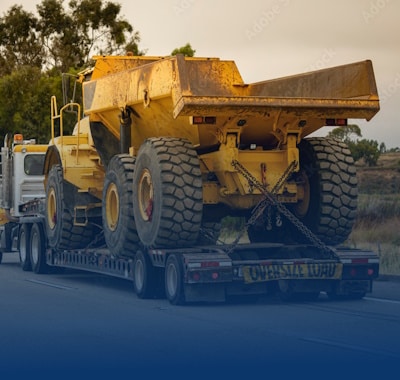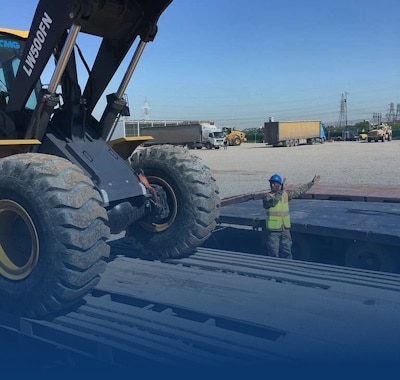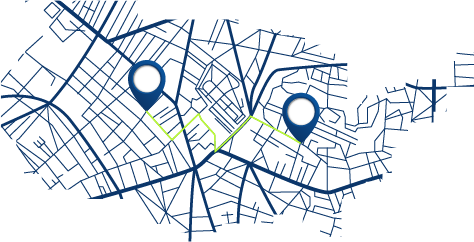Navigating Oversize Trucking Challenges in the Northeast
Freedom Heavy Haul can offer expedited Pickup and Delivery for any size shipment anywhere in the USA. Contact us today for No Hassle, No Pressure Pricing.
Central Jersey Trucking & Rigging moves heavy haul across Newark, Jersey City, Elizabeth, Trenton, Camden, Philadelphia and NYC. Their team handles permits, escorts, tight windows, and route planning to keep large freight on schedule.
The region has old roads, dense population, and tight clearances. These factors demand precise timing and on-site coordination. Drivers and planners match lowboys, step decks, multi-axle rigs, and hydraulic dollies to load specs before a move.
Booking early matters. The company recommends 2–4 weeks lead time to secure permits and staging. Proper prep cuts surprises, from crane readiness to ground-bearing limits, and helps meet toll and window restrictions.
Local knowledge saves time. Years of experience teach which port gates and yards accept oversize arrivals and when. For fast answers call 732.560.1718, email info@cjtruckingrigging.com, or visit www.centralrigging.com.
Why the Northeast Corridor is uniquely tough for oversize and overweight loads
A dense mix of people, ports, and legacy infrastructure compresses industrial demand and rules per mile more than much of the country. That pressure raises planning steps from origin to final staging and makes each move more complex.
Older bridges and angled road alignments limit vertical clearance and turning radius. Planners often swap to longer, slower routes to avoid low spans and tight streets. These detours add miles and extra coordination with permits and escorts.
Traffic and tolls concentrate at a few crossings and tunnels. A driver hitting peak slowdowns or a curfew can lose hours and trigger costly rescheduling. Port-area interchanges and aging pavement also complicate approach angles and police escort timing.
Years of local knowledge matter. Companies with long on-the-ground experience know which routes work and when construction or enforcement shifts require plan changes.
- Quick wins: pick tolls and interchanges that match permit limits.
- Verify: escort thresholds and local approvals before move day.
Permits, escorts, and timing windows: the compliance maze drivers and companies must plan for
When large loads travel through multiple jurisdictions, paperwork and timing control the outcome. Central Jersey Trucking & Rigging handles permit packets, escort bookings, and tight travel windows for transformers, turbines, generators, and CNC machines across Newark, Jersey City, Bayonne, Elizabeth, Trenton, Philadelphia, and NYC.
Multi-state permits often bundle state authorizations with city or county approvals. Start paperwork early—peak seasons or complex loads call for a year lead or the recommended 2–4 week window so approvals and staging line up.
Multi-state permits and local approvals across the region
Some segments require route-specific wording. A single clause can change escort needs and total pay, so planners reconcile every condition before the first axle rolls.
When escorts and police details are required on specific routes
Width, height, nighttime moves, and critical spans trigger civilian escorts or police details. A driver coordinates staging and checkpoint calls to keep the move compliant.
Tolls, curfews, and time-sensitive movement
Tolls and posted windows control when convoys can enter bridges or tunnels. Permitted hours must fit a driver’s HOS clock, so dispatch builds buffers for traffic, inspections, and unexpected delays.
- Practical tip: track local events and seasonal enforcement to protect time blocks and avoid standby costs for cranes and crews.
| Permit Type | Escort Trigger | Typical Time Window | Impact on Pay & Schedule |
|---|---|---|---|
| State-wide multi-axle | Width & height exceed limits | Night or off-peak hours | Higher escort fees; strict arrival times |
| City/county lane | Narrow streets / tight turns | Daytime with police detail | Shorter windows; potential delays |
| Interstate special | High-value cargo | Controlled bridge/tunnel slots | Premium tolls; precise scheduling |
| Port access | Terminal-specific rules | Port operating hours | Standby charges if late |
Challenges of oversize trucking in the Northeast corridor that shape every route decision
Low headroom over legacy bridges often sets the upper limit for which trailers and gear can be used. That reality forces planners to pick lowboys, hydraulic dollies, or step decks to control height precisely. Teams measure clearances, inspect viaducts, and map alternate passages before departure.
Low bridges, older infrastructure, and tight clearances on key roads
Many older spans require strict height control. Moving turbines or generators under a low span means taking a longer path or using specialized trailers to reduce deck height.
City streets, complex exits, and restricted areas from NYC to Newark and beyond
Port-adjacent grids have narrow streets, tight turns, and short merge lanes. A missed merge or an odd exit geometry can force a stop that violates a timed permit window.
- Mid-route restrictions: construction, school zones, or seasonal bans can appear without warning.
- Staging limits: nearby lot space is scarce, so pre-booked pull-offs or yards prevent blocked lanes.
- Protecting freight: fragile cargo needs smooth starts and stops over rough pavement, steering route choice.
- On-site support: spotters and live comms help drivers track axles and clear obstacles at pinch points.
| Issue | Impact | Typical Remedy |
|---|---|---|
| Low bridges | Height limits; detours | Lowboy or hydraulic dolly; revised route |
| Narrow streets & tight turns | Lane control; slow moves | Escort, spotters, police detail |
| Short merge lanes / complex exit | Momentum loss; permit risk | Timing buffers; route rehearsals |
| Limited staging lots | Blocking risk during checks | Pre-arranged yard or pull-off |
Traffic congestion, HOS pressure, and the hunt for safe parking and truck stops
Rush-hour backups and sudden lane closures can strip minutes from a permit window faster than planners expect. Central Jersey Trucking & Rigging builds schedules around real-world travel speeds, not ideal map times. That keeps moves legal and crews on time.
Balancing hours with real-world delays
Dispatchers sync permitted travel slots with historical traffic patterns. This protects drivers’ hours and avoids costly holdovers when a short leg turns long.
Reserve or pre-identify parking and staging lots where long rigs, escorts, and support vehicles fit. Regular truck stops often fill fast near big metros, especially on weekends and evenings.
Drivers should confirm escort staging points and safe inspection stops before departure. Pick flat surfaces with good shoulders to protect load stability during checks.
- Use split-sleeper options and off-peak departures to ease HOS pressure.
- Document driving conditions per segment so planners refine future schedules for day versus weekend patterns.
- Coordinate with customers for off-site staging and short final moves inside permitted windows.
| Issue | Quick fix | Why it matters |
|---|---|---|
| Traffic congestion | Buffer time & alternate routes | Protects hours and permit windows |
| Full truck stops | Pre-book or use designated lot | Prevents illegal stops and delays |
| Limited shoulder | Choose flatter pull-offs | Maintains load stability |
Trip planning that works: proven ways companies and drivers keep loads moving
Good trip planning starts by mapping every mile and checking vertical clearances, bridge ratings, and city rules. That upfront work saves time and avoids last-minute reroutes.
Route optimization to avoid restricted roads, narrow streets, and low structures
Use route software plus local intel to filter roads by height, posted weight, and construction alerts. Plot alternate paths and mark tolls and known bottlenecks per mile so a driver can switch without losing a permit window.
Using the right equipment: lowboys, multi-axle trailers, step decks, and hydraulic dollies
Match gear to the load. Lowboys cut height, multi-axle groups spread weight, and hydraulic dollies give modular flexibility. Picking the correct trailer can open a route that would otherwise be off-limits.
Coordinating with customers on windows, access, and on-site rigging
Contact customers early to confirm gate heights, crane timing, pad capacity, and onsite traffic patterns. Align rigging schedules with permit windows so crews and escorts meet the time agreed without extra standby fees.
Focusing on major hubs
Concentrate planning around Newark, Jersey City, Bayonne, Elizabeth, Trenton, Philadelphia, and NYC. Years of local runs reveal which streets allow off-peak staging and which approach keeps you under lower structures.
- Pre-calc segments: note tolls, safe pull-offs, and inspection stops.
- Add a secondary route and emergency stop list for sudden closures.
- Keep live comms between dispatch, escort, and customer during driving.
| Focus | Action | Benefit |
|---|---|---|
| Route optimization | Software + local intel; mark clearances | Fewer detours; protected permit windows |
| Equipment match | Lowboy / multi-axle / dollies selection | Access to tighter routes; safer axle loads |
| Customer coordination | Confirm gates, crane time, staging | Reduced standby time; smooth site work |
| Segment planning | Mile-by-mile tolls and pull-off list | Better HOS balance and inspection stops |
Turning a tough region into a reliable lane: practical next steps for your next load
Treat every job like a short project: lock a primary route and a vetted alternate, then map the exact places for safe stops, escort meetups, and inspection pull-offs so the driver always has a clear way forward.
Confirm tolls, curfews, and permitted hours for each city crossing and build a one-page timeline that lists time checkpoints and who the point person is at each milestone.
If site access is tight, pre-walk the last mile with photos and measurements. Align pay, hours, and any weekend segments in the job brief so the driver knows expectations and waiting time rules.
Keep a short list of trusted lots, truck stops, and parking around major areas. Train your team to log what worked so years of experience become repeatable wins.
Ready to turn tough roads into reliable lanes? Call Central Jersey Trucking & Rigging at 732.560.1718 or email info@cjtruckingrigging.com. Visit www.centralrigging.com.







